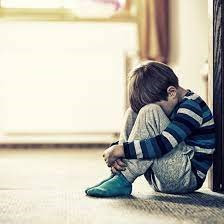Why children become the easy victim?
Children, by
definition, are not capable of making the decision to have a consensual sexual
relationship. Because of their tender years, lack of education and transportation,
children are completely dependent on the adults responsible for their care.
When a child is enticed into sexual activity, s/he is manipulated into the act—not
a full participant. It simply is not possible for a child who is not granted
full adult rights—to vote, to self-determination and self-support— to consent
to sex with an adult. The law has sometimes referred to sexual activity between
an adult and a person not yet of adult age as “statutory rape” because the sex
was “consensual” but illegal by statute based on the difference in age between
the partners. When the child is younger, the act has often been classified as
“molestation”. Sex between a minor and an adult is considered to be sexual
assault. Sexual assault of a child can include kissing, fondling, oral contact
to genitals, and penetration whether with an object or a part of the body.
 Child pornography
is a permanent record of a child’s sexual assault that exploits the victim each
time it is viewed for pleasure. It is impossible to scale the damage that such
an assault can have on a victim, family, and community.
Child pornography
is a permanent record of a child’s sexual assault that exploits the victim each
time it is viewed for pleasure. It is impossible to scale the damage that such
an assault can have on a victim, family, and community.
Offenders who intentionally seek out children and take advantage of their weaknesses for sexual purposes are a form of sexual predator. The weakness can be emotional, psychological, or physical—or any combination of these. There may seem to be some lack of clarity in such a definition, as it would seem that a sex offender by definition is taking advantage of or exploiting the victim.
A sexual predator is defined as a sex offender who takes advantage of a weakness (or weaknesses) of a victim to further sexual exploitation of the victim, with at least some element of planning involved.

